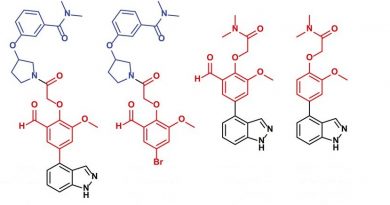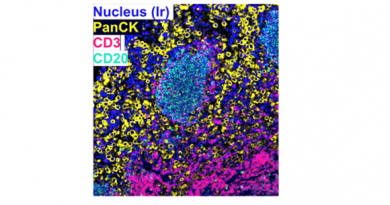A matter of health: How 2015 Nobel Prize drug might rid Africa of ancient scourges

By Dr. Peter Hotez
The announcement that the 2015 Nobel Prize in Physiology or Medicine went to three scientists who developed antiparasitic disease drugs has important implications for sub-Saharan Africa.
Two of the scientists – William C. Campbell and Satoshi Ōmura – shared the prize for the discovery of the drug ivermectin. Ivermectin (trading as mectizan®) is one of the most widely used medicines in Africa. It is used in the mass treatment or prevention of two ancient scourges that have plagued Africa for centuries – elephantiasis and river blindness.
Understanding the diseases
Elephantiasis, commonly referred to as LF, is a disease that affects tens of millions of people in Africa, with Nigeria likely having the largest number of cases. It is caused by a parasitic worm, Wuchereria bancrofti, which affects the lymphatics, genitals and breasts. The parasite in turn is transmitted by mosquitoes.
Although not fatal, elephantiasis can severely disfigure its victim, resulting in profound social stigma. By distorting the limbs and other body parts, elephantiasis renders people too sick to work so that elephantiasis hinders economic productivity.
However, there is good news. It was recently estimated that 139 million people in Africa received elephantiasis treatments in 2013. This was made possible by the Mectizan Donation Programme along with the World Health Organisation and the Global Programme to Eliminate elephantiasis.
By killing the embryonic microfilaria stages of W. bancrofti, wide-scale delivery and treatment with mectizan can interrupt the transmission of elephantiasis. So far, Togo may be the first African nation to eliminate elephantiasis through this approach. The global goal is to eliminate elephantiasis by 2020.
Similarly, onchocerciasis is also caused by a parasitic worm, Onchocerca volvulus, which is transmitted by black flies that live near fast-flowing streams and rivers. The microfilarial stages of parasitic worm cause disfiguring skin disease, but also invade the cornea to cause blindness.
Between 17 and 30 million people are affected by onchocerciasis in sub-Saharan Africa. Through the Mectizan Donation Programme and the World Health Organisation’s African Programme for Onchocerciasis Control, it is estimated that 100 million people were treated in 2013.
Because of mass treatment programmes, onchocerciasis has been eliminated in Mali and Senegal. There is optimism that the disease will be eliminated elsewhere.
A plan to eliminate diseases
The discoveries of Campbell and Omura may enable us to eliminate these two diseases some day. But we have a long way to go. For onchocerciasis, there is concern that ivermectin has to be administered for the entire lifespan of the adult parasite, meaning 17 years. This is because ivermectin only targets the microfilarial stages and not the adult worms.
As such, the Drugs for Neglected Tropical Diseases Initiative is working to develop new medicines targeting adult worms. This is in addition to efforts by the Liverpool School of Tropical Medicine. In parallel, the Sabin Vaccine Institute is working with a consortium of partners in the Onchocerciasis Vaccine for Africa Initiative to develop preventative vaccines.
In the meantime, the use of ivermectin in Africa is being expanded by using this medicine as part of a package of “rapid impact” medicines. This includes three other medicines for intestinal worms, schistosomiasis and trachoma. All the medicines are donated by major pharmaceutical companies.
With these generous contributions and support from bilateral agencies such as the US Agency for International Development and the UK Department for International Development, more than 450 million people have been treated for neglected tropical diseases worldwide.
These and other partners, including the Global Network for Neglected Tropical Diseases and the END Fund, are now working with the G7 countries to support mass treatment for these diseases of poverty. At the same time, we are developing new vaccines for diseases such as hookworm and schistosomiasis. These activities will occur through the sustainable development goals recently adopted at the UN General Assembly.
We can control and eliminate neglected tropical diseases within a decade. However, it will require continued advocacy, expanded treatment programs and scientific innovations.
Hotez is dean of the National School of Tropical Medicine and professor of pediatrics and molecular virology & microbiology at Baylor College of Medicine, president of the Sabin Vaccine Institute, holds the Texas Children’s Hospital Endowed Chair for Tropical Pediatrics and serves as U.S. Science Envoy for the White House and State Department.
This piece first appeared in The Conversation, an online publication that uses a Creative Commons Attribution NoDerivatives license that allow republication of articles for free, online or in print. The Conversation is funded by the Gordon and Betty Moore Foundation, Howard Hughes Medical Institute, the Knight Foundation, Robert Wood Johnson Foundation, Alfred P Sloan Foundation and William and Flora Hewlett Foundation. Our global publishing platform is funded by Commonwealth Bank of Australia.



